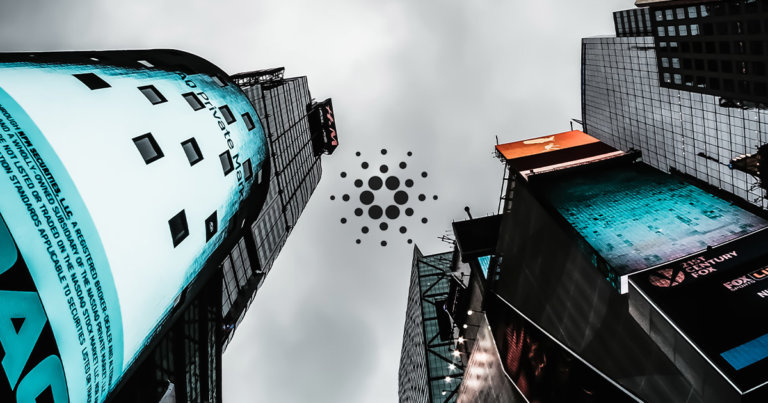 What it takes to make Cardano (ADA) the obvious choice for Fortune 500 companies
What it takes to make Cardano (ADA) the obvious choice for Fortune 500 companies What it takes to make Cardano (ADA) the obvious choice for Fortune 500 companies

Photo by Malcolm Lightbody on Unsplash
Armed with a slew of new faces, the Cardano Foundation has set its sights on making Cardano the go-to platform for governments and enterprises across the world. However, a mountain of unique challenges lay in its way, ranging from governance problems to long procurement times in large Fortune 500 companies.
Luckily, the foundation’s new CEO, a former PwC executive, has ideas on how to overcome them.
The Cardano Foundation is gearing up for an exciting 2021
The launch of Shelley has been a major turning point for Cardano. The ambitious blockchain project created by IOHK has been five years in the making, but the July launch of its staking era marked the beginning of a new chapter for the entire ecosystem.
Less than six months later, most of the pieces required to launch Goguen and its smart contract functionality are set in place. Work on Voltaire, Cardano’s governance era, is also heavily underway.
With most of these functionalities set to see the light of day at various times next year, the community expects that they will be the main force driving more adoption.
However, with IOHK and the Cardano Foundation still holding mandates to run the Cardano blockchain, the two entities, not the community, will be responsible for onboarding more partners to the blockchain.
And while IOHK has put most of its focus on technical development, the Cardano Foundation took upon itself the “human” aspect of adoption, making the promotion of the blockchain its main purpose.
Handling such a huge task required expanding the Foundation’s team, which is why 11 new members were onboarded this year alone. Among them is the Foundation’s new CEO, Frederik Gregaard, who left his role as the leader of PwC Switzerland’s Digital Financial Services to drive adoption for Cardano.
Gregaard joined Charles Hoskinson, the CEO of IOHK, in a fireside chat streamed on Dec. 10 to share his thoughts on the current state of the Cardano Foundation and give the community a bit more insight into what he has in store for Cardano.
Despite holding his position for less than three months, Gregaard already has strong opinions on where the Foundation should go. His first impressions of Cardano are incredibly positive, he told Hoskinson, adding that he was primarily surprised with the teams’ ability to ship code.
What left the biggest impression on the financial industry veteran, however, was the community that gathered around Cardano. The rate of engagement across all community channels, from Telegram groups to IdeaScale, is something rarely seen in the blockchain industry and is something Gregaard believes is Cardano’s most valuable asset.
That isn’t to say that there aren’t a slew of problems and issues that need to be resolved both within Cardano and the Foundation itself. Gregaard said that the Foundation faces big governance challenges unique to a system that has a huge number of people working both on it and in it.
The problem of implementing blockchain technology to large corporations and governments
Relatively new to the crypto space, Gregaard has brought a completely new outlook on blockchain adoption to the Cardano Foundation. Namely, he believes that having the best protocol isn’t in itself enough to bring adoption.
He explained that most Fortune 500 companies are run by people who rely on trusted, old systems and are reluctant to take the risk of implementing entirely new technology to their company. And it’s not just the high management and executives that are reluctant to adopt new systems—Gregaard said that sometimes even the research and development departments are the ones that slam the breaks when it comes to technological progress.
Procurement is a dreaded thing in large corporations, he told Hoskinson, explaining that few people in the consumer space realize the complexity of the systems that underline these companies. Any change a corporation or a government implements affects hundreds, sometimes even thousands of people, putting millions and billions of dollars worth of assets in jeopardy. When combined with the fact that dozens of people are usually included in any decision-making process within a company, the long procurement times dreaded by the crypto industry become much more understandable.
Gregaard also noted that blockchain also has a strong novelty factor that prevents its adoption. The open-source decentralized architecture of blockchain technology is very different from the closed systems most corporations know and are used to.
Even if all of this wasn’t as big of an issue as it is, the cost factor still remains one of the biggest roadblocks for enterprises looking to adopt blockchain technology.
With an unpredictable fee structure and gas with costs ranging from mere cents to hundreds of dollars per transaction, Ethereum failed to see mass adoption from enterprises despite the size of its community.
Cardano brings the stability and predictability corporations need
Cardano, on the other hand, was built on rigorous processes that ensure the cost of operating on the blockchain is known in advance. The formal methods used in developing the protocol resulted in an unprecedented level of trust and certainty that the system will remain stable and reliable no matter what the market throws at it.
And it’s this reliability that will drastically reduce procurement time for Fortune 500 companies looking to implement blockchain technology.
While Gregaar admitted that many Fortune 500 companies already have governance models in place that are significantly better than what is currently offered by blockchains, he noted that they still face serious stability issues. He said that it goes to show that there’s a serious need for governance-as-a-service even in companies that invested millions of dollars into their own in-house governance solutions.
The good news is that most of the problems IOHK sought out to solve with Cardano are what Fortune 500 companies are currently suffering from. The bad news is that there is still a long way to go before Cardano becomes a go-to platform for a company like that.
Gregaard believes that the Cardano Foundation isn’t harnessing the power of the Cardano community. He said that all aspects of the community need to be rethought and redeployed, as the community is, and always will be, Cardano’s strongest asset.
“The role of the Cardano Foundation is to show the art of the possible,” Gregaard said.
He explained that the Foundation needs to educate the community about Cardano and what’s possible to achieve with it. Giving the community the source code, tools, and connectors will enable people to build local business models that fix local problems.
And this, Gregaard said, is what will convince large companies and governments that there is real value to Cardano and the people gathered around it.
























































